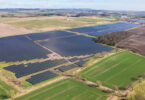Mamta is a seasoned economist with over 25 years of expertise in the intersection of gender and climate change. She has spearheaded teams pioneering initiatives aimed at bolstering resilience among women and ensuring safety and security for women and children in vulnerable communities. Currently serving as Executive Director at SHE Changes Climate, Mamta leads the organisation in fulfilling its vision.
Natalie is a communications architect who designs strategies that incorporate storytelling for social change. She is passionate about development and has over 6 years combined experience in communications for health, education, gender equality and climate action. She is the Head of Communications at SHE Changes climate and her work has significantly supported the movement’s external growth and visibility in the gender-climate space.
How Did You Get Into Climate Advocacy?
Mamta: My passion for creating a better world led me to embrace the challenging role at SCC. I am deeply grateful for the opportunity to work at the grassroots level, gaining firsthand experience of how climate change impacts vulnerable communities. Witnessing the resilience and determination within these communities as they confront and overcome this crisis has been immensely inspiring. I am committed to leveraging this experience through strong advocacy at SCC, serving as a conduit to amplify the voices of these women warriors in global policymaking. I firmly believe that women not only excel as leaders but, as half of the population, they have a rightful place at the table. Addressing the leadership crisis necessitates shared leadership, and it’s time to ensure that all voices are heard and represented. I believe we in SCC are committed to that.
Natalie: My personality pulled me into the world of communications, initially learning the ropes of media communications and podcasting, before ‘accidentally’ joining the world of storytelling. I realised how fundamental stories were in shaping our perspectives and in enabling people to be part of conversations by allowing them to understand things that would otherwise be considered complex — and so with this I grew into a communications professional grounded in the power of storytelling. Joining SHE Changes Climate came out of a passion for the environment, but a curiosity to understand how equitable governance is achieved. By working closely with advocacy professionals in the climate space, I’ve been able to see how communications and even storytelling is a conduit for climate advocacy campaigning.
SHE Changes Climate’s Mission
SHE Changes Climate (we write the ‘SHE’ in uppercase for emphasis and tend to abbreviate the name as SCC) is a global movement advocating for inclusion and diversity in climate leadership and policies. We believe that women in all their diversity are active participants in climate action at grassroots level and even in leadership, and this must be reflected in global climate leadership and policies. We are committed to ensuring that women in all their diversity are included as active participants in climate leadership and policy making processes. To achieve this, we are actively campaigning for inclusion and diversity by working closely with governments to influence climate policies such that they can be more inclusive, and we collaborate with like-minded organisations to raise awareness of inequalities in climate leadership and to support women leaders in the Global South.
She Changes Climate’s Objectives
Mamta: In the coming year, we aim to bring together women leaders in different countries, providing a platform for collaborative action and knowledge exchange. We will also continue to focus on building the voices of youth in climate decision-making processes. Through this collective effort, we aspire to create increased momentum, propelling just energy transition pathways, with women at the forefront and centre.
Natalie: SCC is currently in a progressive space, having transitioned from a campaign to a movement. On the communications front, we want to keep expanding our digital community, using various creative and collaborative methods to open up more conversations about inclusion and diversity as a necessity to equitable climate action.
Does Climate Change Impact Women Differently?
Mamta: This is the basis of our movement and over the past year working in climate communications, I have seen time and again the statistics showing women as victims of climate change. This is only a fraction of the narrative and one we’ve been intentional about as we approach our external communications as movement builders and shapers. When you go out into different parts of the world where climate disasters have struck communities, women will be clearly seen as the immediate responders, the community builders and the people leading on solutions to these disasters. We often hear the phrase “women are disproportionately affected by climate change” but there’s not enough exploration on how they effectively respond. If we do this, we will understand as a society why they should be the ones designing and implementing global climate action policies.
Natalie: Climate change is affecting everyone, but not equally, women and girls, especially those in the vulnerable communities, are most susceptible to the effects of climate change, especially due to the existing inequalities that limit their access to resources and to decision making. For example, almost 80% of the world’s undernourished people depend on agriculture for their livelihood, and 75% of the world’s poorest households are directly or indirectly dependent on farming or fishing (FAO, 2009). The challenge of maintaining sustainable livelihoods in a degrading environment is also a gender sensitive issue. Women are vulnerable and produce up to 90% of rural poor’s food and face climate change, depletion of natural resources, because they are disproportionately involved in livelihood and reliant on natural resource dependent activities (WWF, 2010). Women are disproportionately affected in times of natural disaster. Most of the women lack access to information regarding floods, earthquakes, cyclones, tsunami, etc. Women mostly stay at homes during disasters as they are not trained up with coping skills like swimming, climbing trees, etc. Life saving skills are mostly taught to men and women are excluded in decision making during disasters.
In the 2004 Tsunami in the Indian ocean an average of 77 percent casualties were women because they were not taught to swim where many drowned. But as Natalie mentions it is equally important to highlight that women in these vulnerable communities are also the solution providers when provided with agency. There are several examples in the global south where women in remote vulnerable areas are leading change through several entrepreneurial initiatives engaging technology, creating awareness, educating and building momentum for a just climate action.
The Major Barriers Hindering Progress in Addressing Climate Change
Mamta: The primary hurdle lies in acknowledging the pressing nature of the crisis. Decision-makers often exhibit short-sightedness in promptly addressing urgent actions. There’s a conspicuous absence of strong leadership focus in both government and the corporate sector, with those most impacted by climate change frequently excluded from decision-making circles, relegated to mere anecdotal evidence. The intricate connection between climate and human rightsM remains inadequately grasped, perpetuating siloed thinking. Recognizing the imperative for collective action, we must unite, pooling our diverse skills and expertise to confront this crisis head-on.
Natalie: “The climate crisis is a leadership crisis.” This is the statement that has always drawn people to our campaign: it is simple but packs a powerful punch because it states that governance is fundamental in the journey of progression or lack thereof. The statement is also drawn from reflections on gender disparity in climate leadership. COP — the largest annual climate conference, has been happening for over 28 years, and in that time, only 5 women have been appointed to lead. This says a lot about where we are at and why we need to change. With more equitable governance across the different tiers of climate leadership, we can be reassured and hopeful about how we address and manage the climate crisis.
Contributing Impactful Action in Mitigating Climate Change
Mamta: From what I have learnt, one of the most impactful actions an average person can take is to reduce their carbon footprint. Mindful consumption, supporting sustainable practices, reducing waste generation, all these are simple steps leading to a larger impact.
Natalie: We hosted an intergenerational dialogue at COP28 and this was one of the questions that came up and was aptly responded by one of the women leaders in our network, Jojo Mehta of Stop Ecocide international. She said: use the resources around you. In this case resources could look like access to information online to understand the global realities associated with climate change, the movements working to resolve these challenges, and the processes of shifting climate policies. It could even be as simple as adding an eco-friendly activity into your routine or volunteering your time at a movement working to address the climate crisis. It’s these little changes or added knowledge that goes a long way to driving impact.
Advice for women looking to pursue a career in climate
Mamta: Be resilient and persistent. Find your niche-every skill is required to tackle this crisis, and at every step promote diversity and inclusion in your action
Natalie: Be curious. Read. Ask when you don’t know. And try.
Related articles: Climate Change And Mental Health: How The Younger Generation Are Being Impacted







